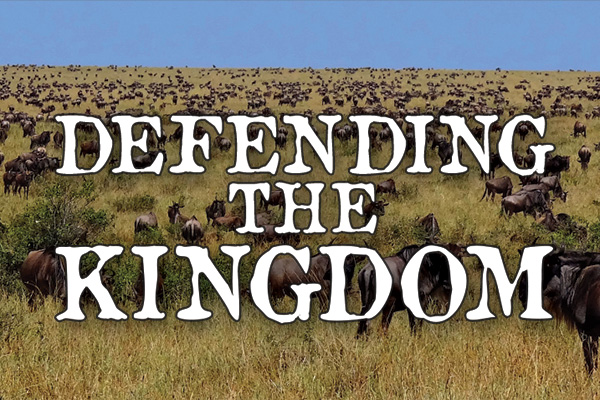Defending the kingdom | Issue 09
A piggy prison
It is a common misconception that the factory farm is not a New Zealand issue. We have images in our mind of rolling pastures dotted with cattle, or rugged peaks mottled with sheep. However, most pigs are not so lucky. It is the sad truth that even New Zealand sows (adult female pigs) spend a large part of their lives in stark confinement. A sow stall, also known as a gestation crate, is a metal cage measuring about 60 by 200 centimetres. Housed indoors, the concrete floor is sloped to allow waste to drain out. The confines of the cage mean that the pig is unable to turn around or lie on their side.
The vast majority of the world’s sows are contained in these conditions for the duration of their pregnancy, which lasts an average of 114 days. With an average of 2.5 pregnancies in a year, sows spend most of these 285 days contained in the sow crate. While nursing their young, the sow is placed in a similar confine called a farrowing crate. Slightly larger, the pig is able to lie on their side to allow teat access to the piglets. The use of the farrowing crate is only needed as the pork industry demands production of more piglets than a sow can naturally handle.
Thankfully, in December 2012, the use of sow crates in NZ was limited to the first four weeks of pregnancy. However, this is still four weeks of solitary confinement. Studies have shown that sows in these conditions exhibit repetitive behaviours such as head waving, tongue rolling and biting the bars of the crate, sometimes until their gums bleed. Sows in these conditions have also been observed to suffer from learned helplessness, in that they will remain passive when poked or splashed with a bucket of water.
Proponents argue that the sow crate is necessary, as sows become aggressive during pregnancy, and can harm the swineherd or other pigs. However, the final size of the crate cannot rest upon any other factor than cost saving. There is no reason why the crates cannot be large enough to allow a pig to be comfortable.
The sow crate is banned in Sweden and the UK, and, thankfully, will be phased out here next year. Already prohibited in Sweden and Switzerland, there are no plans to discontinue the use of farrowing crates in NZ. So next time you bite into your bacon buttie, have a think about what suffering has occurred before that tasty morsel. It might be better to avoid pork altogether, at least until next year – unless it is free range.



